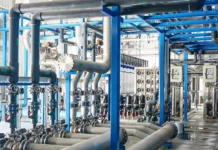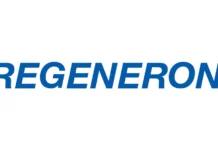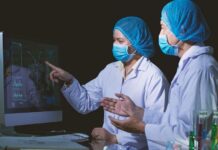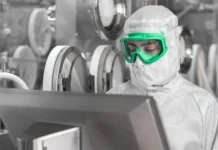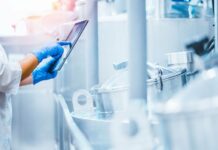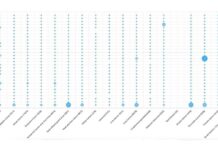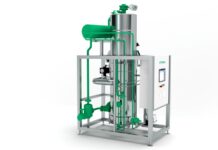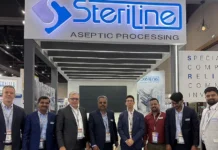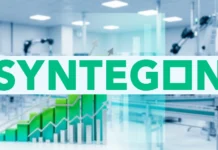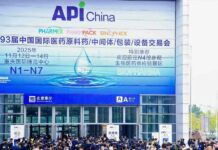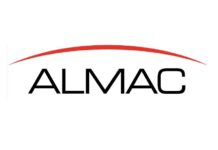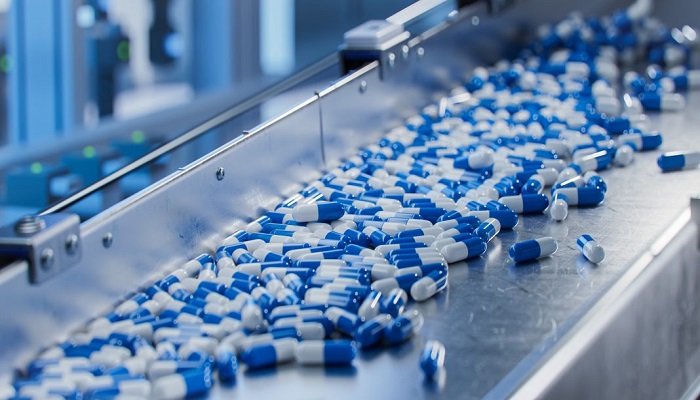In the last dozen years, Industry 4.0 has brought about a significant transformation when it comes to manufacturing technology. It has enabled machines to seamlessly connect with each other, resulting in smart manufacturing that automates as well as optimises various processes. By incorporating technologies including the IIoT, AI, and ML, as well as cloud and cognitive computing, into manufacturing ecosystems, several benefits can be achieved, which include maintaining consistent quality and manufacturing flow, enhancing productivity, reducing downtime, maximising operations, and at the same time reducing costs.
In 2017, the International Society for Pharmaceutical Engineering- ISPE introduced Pharma 4.0, a framework that adapts Industry 4.0 to the pharmaceutical sector. Pharma 4.0 happens to be a comprehensive and digitised operational model that integrates multiple elements, including enhanced data quality, heightened exposure, and increased transparency. Its purpose is to promote more effective collaboration across different departments within an organisation. By integrating AI and ML, teams can leverage intelligent and contextual analytics to enhance their production planning and model various operational scenarios.
In addition, the ability to optimise product lines is becoming increasingly important as personalised medicine and small-batch, specialised therapeutics become more popular. This allows for greater manufacturing flexibility, which is crucial when it comes to meeting the demands of these emerging trends.
The manufacturing industry is currently focusing on the next significant advancement known as Industry 5.0, a concept defined by the European Union as:
– Offering a broader perspective of the industry that goes beyond just efficiency and productivity and instead highlights the industry’s role and impact on society.
– Prioritising employee empowerment by utilising new technologies to provide a sense of fulfilment that extends beyond mere jobs and growth.
– Complementing Industry 4.0 when it comes to emphasizing on research and innovation to help the shift towards a more environmentally aware, sustainable, human-centred as well as resilient industry.
Industry 5.0 mainly emphasises the significance of value, whether it is to individuals, society, or the environment. The concept builds upon Industry 4.0, utilising advanced technologies to automate repetitive tasks. However, it emphasises on these technologies supporting, rather than replacing, a recently empowered workforce in ways that happen to be meaningful. Since there is currently no ISPE Pharma 5.0 model in place, it is time to discover the potential advantages of Industry 5.0 when it comes to pharma manufacturing.
Utilising human expertise
Industry 5.0 places emphasis on the added value and distinctive qualities that human expertise contributes to discovery, design, and manufacturing. By strategically automating tasks, humans and technology can collaborate effectively to design and implement pharmaceutical processes and decision-making that are more effective, intelligent, and data-driven. Applying human expertise and knowledge to higher-value activities offers substantial opportunities across the pharmaceutical product cycle.
For instance, let us pay heed to paper-based records. In the past, there was a significant amount of time that was dedicated to communicating with systems, transferring, , recording, and sharing data within manual, paper-based systems across the entire process of drug discovery to the release of the product. By digitising, automating, as well as streamlining these processes, the information goes on to become readily available to right stakeholders in an automatic as well as immediate manner. This allows scientists to dedicate their attention to right scientific work. In today’s market, where positive patient outcomes happen to be highly valued, it is critical to encourage human imagination, creativity as well as curiosity in order to drive innovation as well as discovery in medicine, science, and technology. This is necessary for developing advanced therapeutics which can significantly upgrade the lives of patients.
Individual growth
Employee well-being happens to be the key focus in Industry 5.0 which is particularly important because expenses associated with employee turnover, recruitment, and training can be significantly high, particularly in markets in which skilled workers happen to be in high demand. Assisting long-term, inclusive relationships and empowering individuals to grow within an organisation can lift in-house expertise and confidence. The execution of effective business continuity strategies can bring numerous benefits to an organisation, such as improved operational efficiency, enhanced morale and work quality as well as a culture that fosters initiative within the employees.
Enhancing collaboration when it comes to humans, machines, software as well as technology can lead to enhanced employee experience as well as job satisfaction. This is because individuals can go on to work in roles that offer greater value and also significance. By leveraging technologies, staff can gain valuable insights allowing them to work more efficiently, efficiently handle their time, implement process improvements, and make well-informed decisions.
Sustainability
As organisations push themselves to address environmental impacts, a prominent impact of Industry 5.0, intelligent technology plays the right role in monitoring manufacturing systems, aids in identifying ineffectiveness, and works towards optimising the usage of natural resources and also energy consumption.
Predictive intelligence often plays a crucial role in promoting sustainability by constantly tracking batch production as well as promptly making necessary adjustments to make sure that products meet specifications and parameters. This proactive approach helps minimise product waste and at the same time enhances overall efficiency. Predictive maintenance, which utilises AI and ML technology, happens to have the capability to contribute to sustainability initiatives by proactively notifying teams when there is a likelihood of plant or equipment needing maintenance. This helps minimise the occurrence of unscheduled downtime, during which facilities continue to make use of resources without being productive.
Transferable plus flexible manufacturing
In the years that have gone by, putting forth a global manufacturing network required a labour-intensive process of building sites one by one and making sure of compliance with various regulatory standards. In Industry 5.0, humans and machines will collaborate to design, model, and implement adaptable manufacturing processes throughout an organisation’s entire manufacturing ecosystem.
The creation of a digital thread establishes a connection between processes, systems, products, and equipment, resulting in a unified and reliable source of information. Location-specific regulatory as well as operational requirements can be met through automatic adjustments. For instance, organisations may use AI and ML technologies to actively monitor data parameters, ensuring continuous compliance. They may also include collaborative robots and modular equipment that can be easily adapted for various purposes. By securely, accurately, and instantaneously sharing data, teams can allocate more of their energy towards refining and optimising manufacturing processes rather than solely focusing on ensuring the functionality of those processes.
To conclude
Industry 5.0 embodies the evolving societal values related to the human experience, environmental consciousness, and the efficient utilisation of technological, natural, and human resources in a sustainable and value-enhancing manner over the long term. To fully leverage the advantages of Industry 5.0, it is crucial to capitalise on the progress made in Industry 4.0 in order to optimise the utilisation of all available resources and achieve the most favourable results.
Of course, there will be challenges that need to be addressed. The main responsibility of drug manufacturers is to make sure of positive healthcare outcomes for patients. In doing so, they must carefully consider the potential risks associated with incorporating new tech and methodologies. Industry 5.0 is not a ready-made process; rather, it is one of the evolutionary concepts that demands a strategic as well as phased approach to preparing and planning. In order to succeed, manufacturers need to have a clear direction and create a strategic plan that involves identifying existing problems that are well understood and can be addressed promptly to generate momentum and build trust across the overall process.
As drug and therapeutic requirements continue to develop, it is necessary for manufacturing processes to adapt accordingly. Manufacturers need to have capacity to quickly and efficiently adjust their operations so as to accommodate the unique therapy requirements and provide more specialised treatments for smaller groups of patients. This flexibility is important in meeting the specific needs of different therapies. Automation allows fulfilment of these needs while also benefiting from expertise of humans, who are able to focus on more advanced tasks such as creative design, innovation, as well as scientific discovery.



